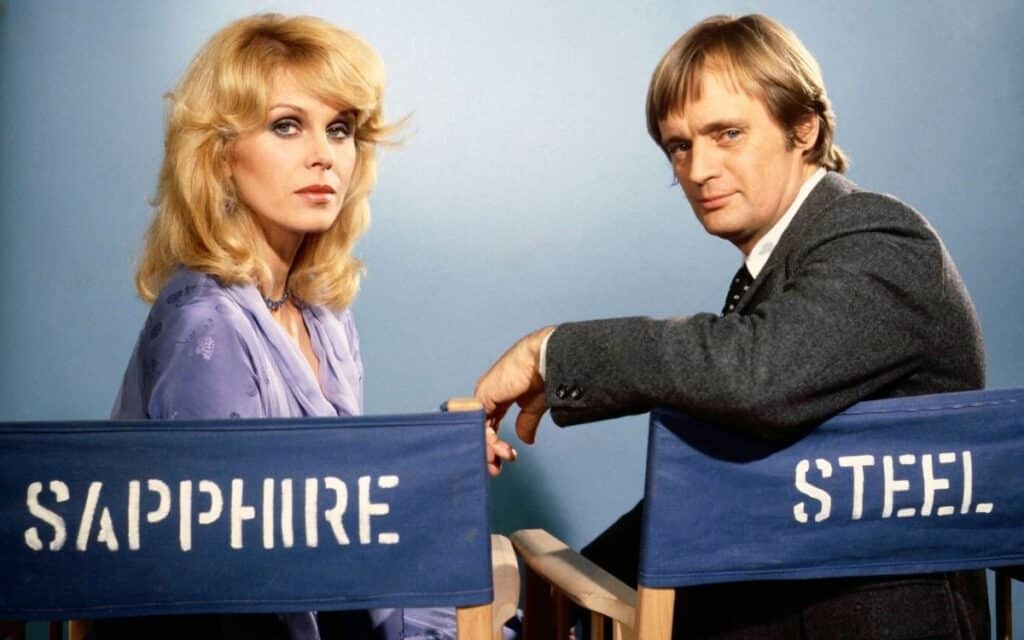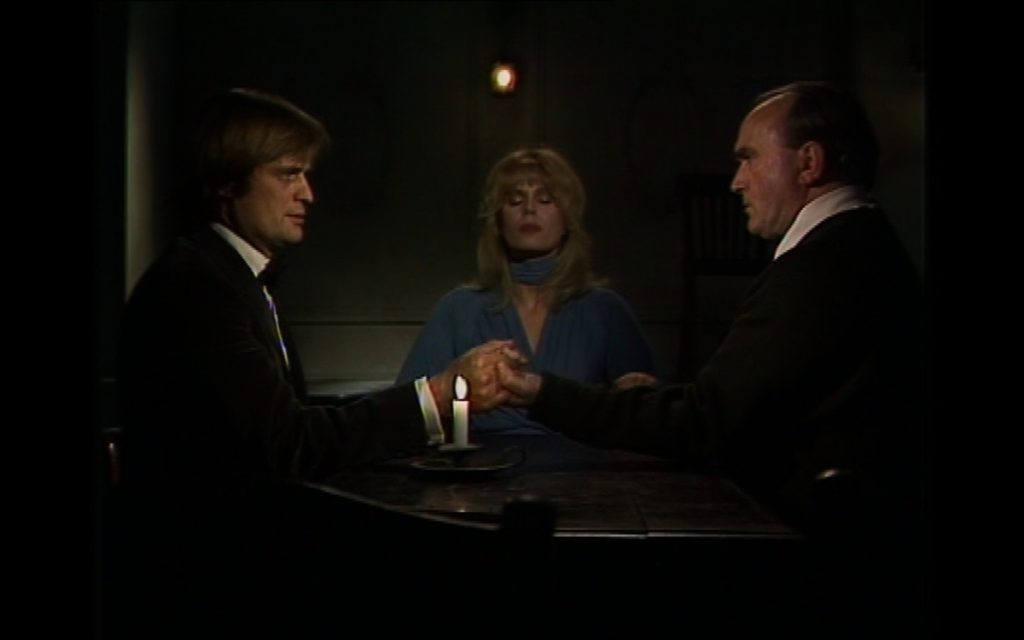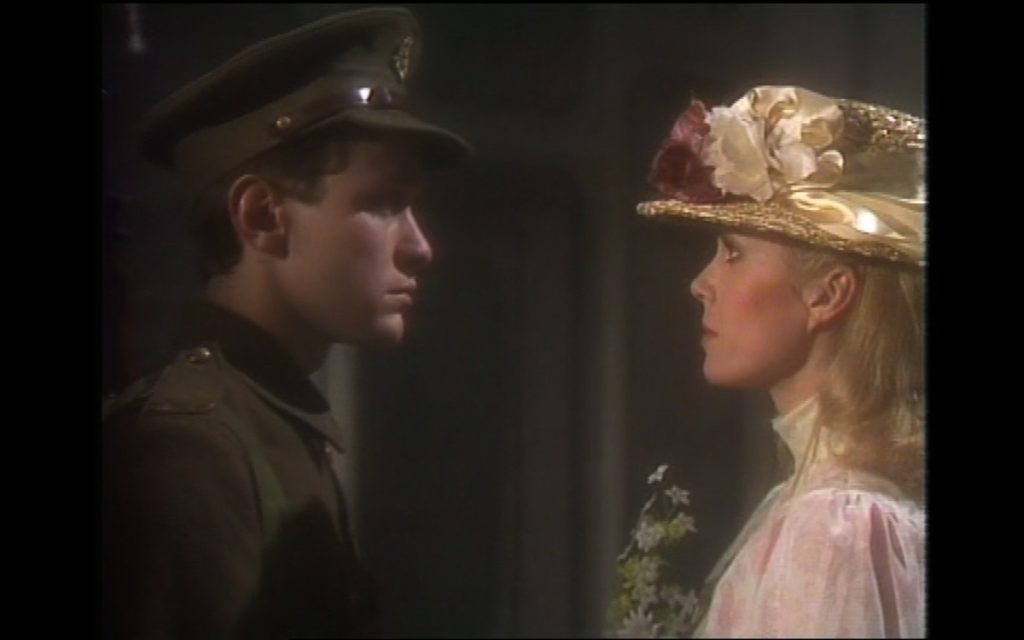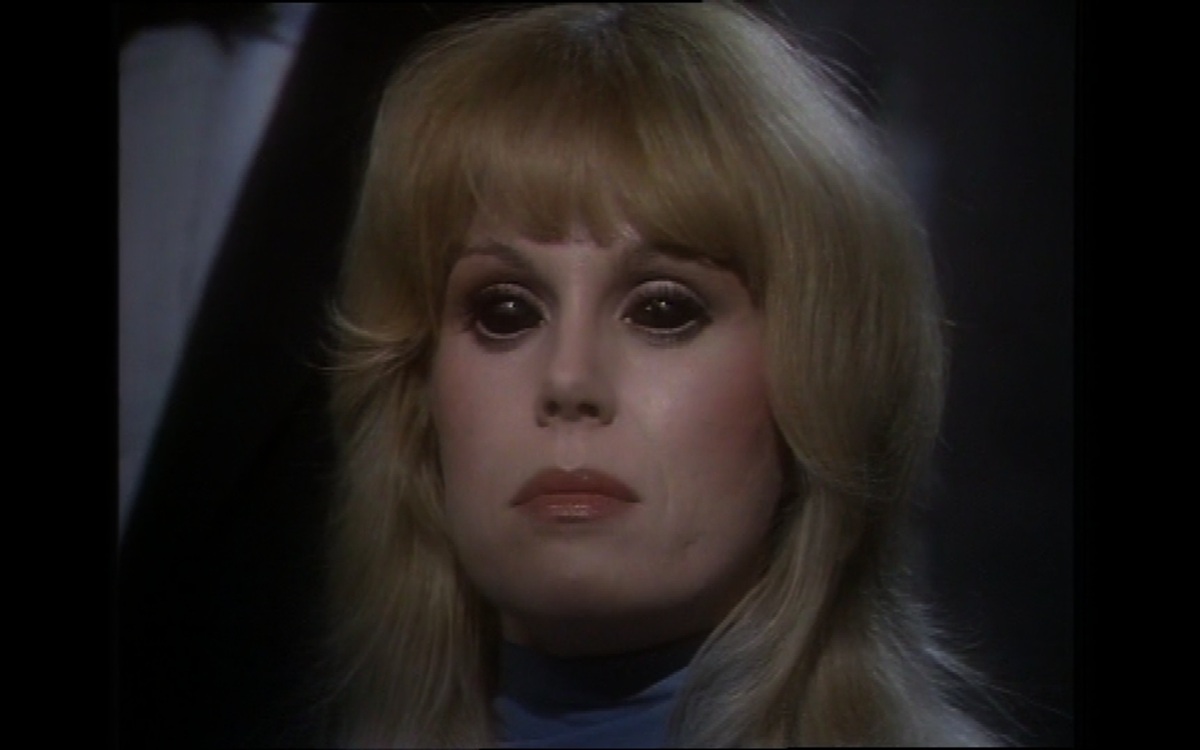The quintessential Sapphire & Steel story? RICHARD PHILLIPS-JONES presents the case, for the chilling Assignment II: The Railway Station.

BROADCAST: in eight parts 31 July–22 November 1979 (see footnote)
STARRING: David McCallum (Steel), Joanna Lumley (Sapphire), Gerald James (Tully)
WRITER: P.J. Hammond
DIRECTOR: Shaun O’Riordan
Sapphire & Steel – Assignment II: The Railway Station Review
Tully, an amateur paranormal investigator, is keeping an overnight watch on a deserted railway station where he has spent two months trying to contact a presence lurking there.
Thinking he has finally made a connection, Tully is instead caught unawares by Steel, making his way down the steps from the bridge, who quickly informs him that what keeps a presence there is “more than just a ghost”.
Sapphire, who is out on the platform, seems especially susceptible to a sensation of…
Sapphire: A summer night. Can you feel the warmth?
Steel (shrugging): No.
Sapphire: And the air.. It’s filled with the smell of flowers…
Tully (“some would be ghost catcher”, as Steel dismissively describes him) thinks he is dealing with a lost soul, but Steel believes it to be something far more malevolent, despite the warm sensation that Sapphire is getting.

That glow soon dissipates when Sapphire feels herself briefly transported into the past, wearing the clothing of the 1910’s and, despite it being mid October, fresh flower arrangements suddenly appear on the platform.
Whatever is there seems to have a strong connection to past military conflicts, especially World War I. It also seems to have a particular interest in Sapphire…
The Railway Station is, in some ways the most difficult of tales for me to summarise. It’s such a special piece of television for me that I’m nervous of giving too much away to anyone who will be encountering it for the first time. All of the incidents above take place in episode one.
However, it doesn’t seem too much of a spoiler to let on that subsequent instalments reveal the station to be a place where the fallen-in-conflict, their deaths unresolved without closure, are drawn in, their grim recollections being weaponised and exploited by the forces that would fracture time for dark ends.
When some of the fallen manifest themselves visually, it brings home all too clearly how futile many of those deaths were. Indeed, at the time of its original broadcast there would still have been plenty of survivors from the first world war who could recall its horrors all too vividly, and it’s to the credit of PJ Hammond that he deftly handles the subject, the lingering trauma left behind by the scars of war, with the right balance between sensitivity and chills.

There is also further exploration of the dynamic between the eponymous duo, and an incident where Steel seems visibly shaken by Sapphire being apparently possessed suggests a hidden vulnerability in this coolest of agents, and a suppressed affection for his colleague.
And yet, The Railway Station would also reveal Steel’s cold and ruthless side in full. Somewhat tempered in dealing with the children of the first assignment, it becomes all too clear by the story’s end that Steel is solely focused on getting the job done, even if that means making a deal with the powers of darkness.
That said, a brief exchange with Tully during the penultimate episode, on the latter’s family situation does add a further enigmatic touch, in a show that was never afraid of ambiguity: Is there a suggestion that Steel may not be entirely unfeeling, or is he simply sizing up Tully’s suitability for his planned denouement?
On the matter of Tully, it has to be mentioned that Gerald James’ performance is top notch, particularly in the closing scenes. He’s no mere supporting player here, his efforts are every bit as integral to The Railway Station as those of the show’s leads for this is, for the most part, a three-hander.
If only one Sapphire & Steel story could be preserved for posterity, painful though it would be to jettison the rest, The Railway Station would undoubtedly be my pick. Morally vague, emotionally haunting, not only would I argue its case as the quintessential story from this most unique of series, but it is also a prime benchmark for the very best in creepy British television.
The Railway Station would also be the longest assignment for Sapphire & Steel, at a whopping eight episodes. Opinion on whether it slightly outstays its welcome varies amongst the show’s admirers but, for my own part, I can never get enough of it.
Meanwhile, back in 1979, with the audience becoming settled into a format where Sapphire & Steel dealt with presences from the past, the next story would throw a bit of a curve ball. Unfortunately, viewers would have to wait just over a year for that one…
TRIVIA POINT: Worth noting – the first two Sapphire & Steel stories were shown without a commercial break, uncommon for a primetime ITV show. This may have been an artistic choice (one which would have met with a fair amount of resistance, I’d imagine), or it may belie the show’s origins as a programme aimed at a children’s TV slot, where commercial breaks were generally frowned upon. Whatever the reason, the show had commercial breaks inserted from its third story onwards.
FOOTNOTE: As mentioned in my series overview, The Railway Station was abruptly truncated after its fourth episode by the ITV Strike of 1979. On the channel’s return, rather than pick up where they left off, the network wisely started the story again from episode one on October 30th 1979.
Tell us your thoughts about Sapphire & Steel Assignment II:The Railway Station in the comments section!



